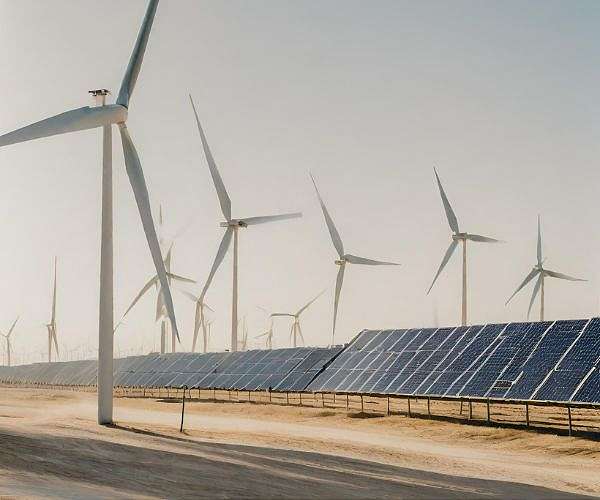Vietnam UPS Wind, Solar DIGHTS as the demand for energy is increasing
Vietnam has drastically increased its wind and sunshots, because it seems to increase its energy production by 2030 to meet the rising demand, according to a revised version of his National Power Plan.
The Southeast Asian country is committed to achieving Net-Zero CO2 emissions by 2050 and the latest edition of its Power Development Plan 8 (PDP8), as is known, MAPT from how it will achieve those goals.
The production power patient is highly dependent on coal to meet its fast -growing energy needs. But now the “strongly renewable energy sources wants to develop”, according to the plan, which was published on Wednesday about the news portal of the government.
With goals set at 73 Gigawatt (GW) for solar energy and 38 GW for wind energy onshore by 2030 – and a significant increase to 296 GW and 230 GW by 2050 – the plan looks “really ambitious”, said Andri Prasetiyo, senior researcher at Senik Center Asia.
The 2023 version of the PDP8 was aimed at 12.8 GW for solar energy and 21 GW for wind towards the end of the decade.
“I think this sends a clear message, Vietnam positions itself to maintain leadership in the clean energy transition of Southeast Asia, (even) a more prominent role in the region,” he said AFP.
Solar energy grew rapidly in Vietnam until 2020, but the success became a roadblock due to infrastructure restrictions.
Prasetiyo said that Vietnam’s new goals were “increasingly feasible”, although they far surpass the market foroses of the market from what the country can achieve.
– coal, nuclear –
The latest version of the PDP8, which was approved this week, also emphasizes the promise of the Land 2023 to end the use of coal by 2050.
At the end of the decade, coal will represent almost 17 percent of his energy mix, at a target of 20 percent in 2023.
In the meantime, by 2030, Solar will be 31 percent of the energy of the country good, while onshore wind will be 16 percent.
More than $ 136 billion will be needed if Vietnam has to get there, the document said.
Under the new plan, the country also wants to open its first nuclear power plant by 2035.
It comes after Vietnam and Russia signed an agreement in January about nuclear energy, in which Hanoi said that the Russian nuclear giant Rosatom was “very interested” in collaboration with a project in the province of Central Ninh Thuan.
In general, since Vietnam focuses on an ambitious economic growth rate of 10 percent at the end of the decade, it wants to increase its total installed capacity to a maximum of 236 GW by that date.
That is more than 80 GW of the figure described in 2023.
Hanoi also would like a repeat of the rolling Black -outs and sudden power outages in the summer of 2023 that led to losses at manufacturers. They also led to a massive disruption for residents, because intensely hot weather and unprecedented drought tense energy supply in North Vietnam.

